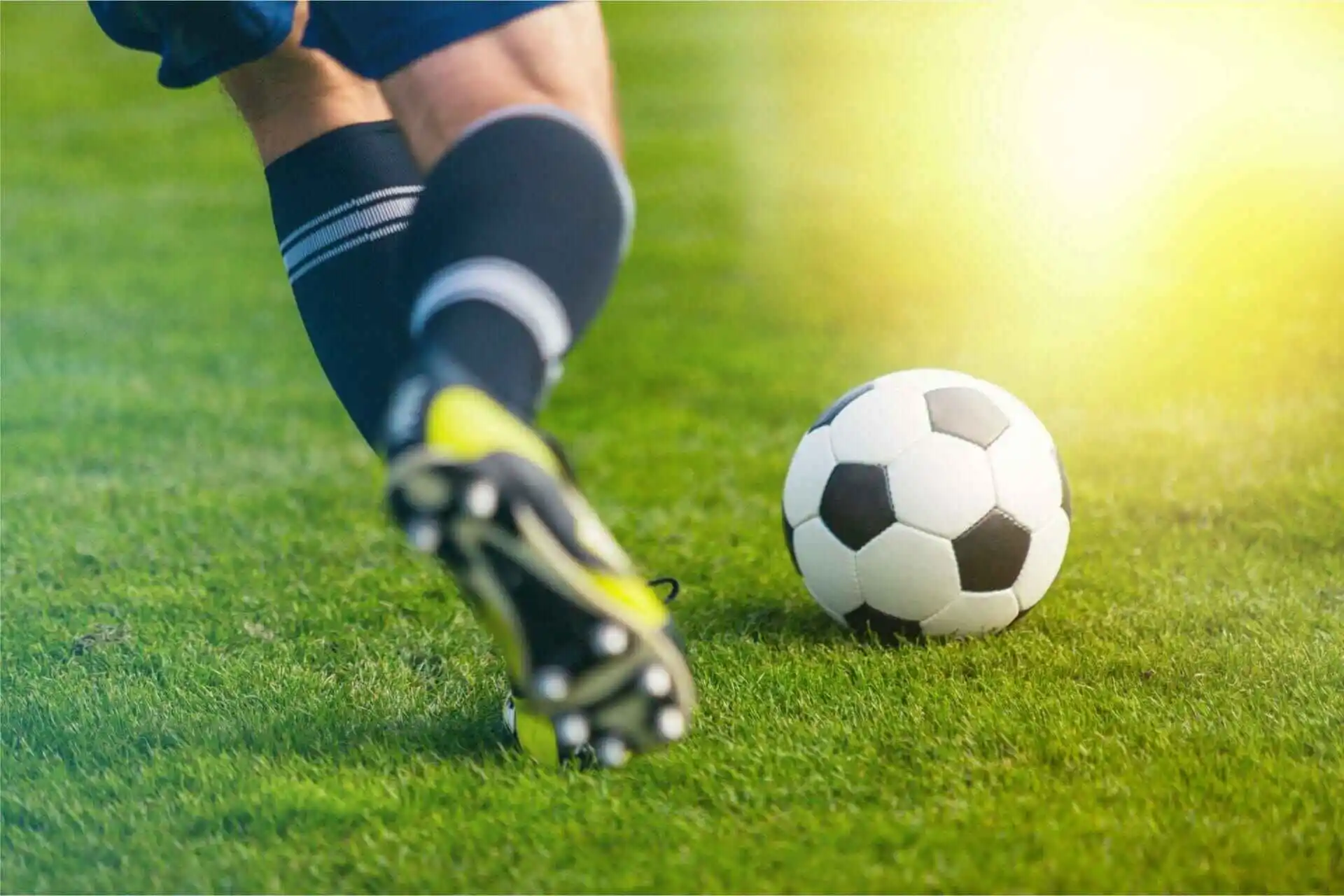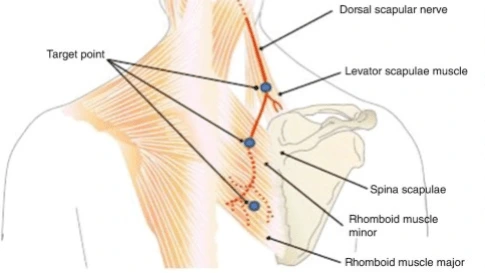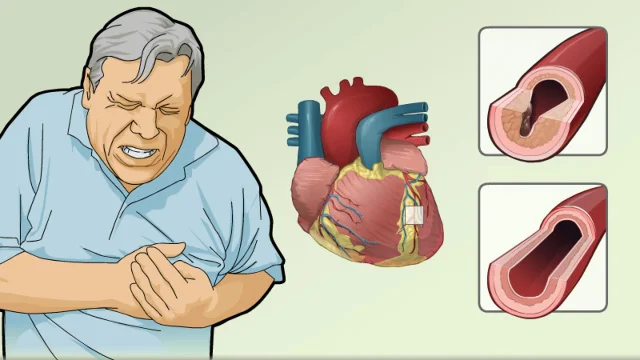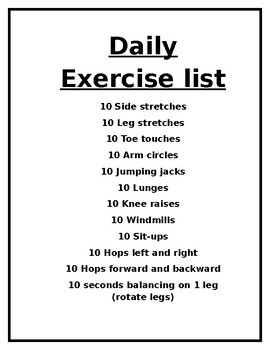Footballer’s Ankle
What Precisely Is A Footballer’s Ankle?
Footballer’s ankle is a common injury caused by repeated twisting or spraining of the ankle. It can lead to pain, swelling, and stiffness, and can make it difficult to play football.
The pinching of bone spurs and soft tissues in the front of your ankle is known as anterior ankle impingement.
Footballer’s ankle, also known as anterior ankle impingement, is a condition that produces pain in the front of your ankle, particularly when you elevate your toes upwards. Impingement can be quite debilitating, producing agony as you walk. It is also known as “footballer’s ankle.” Despite the name, this can occur in a variety of sports. Soccer, football, basketball, and dancing are examples of sports. Run or play sports uphill or upstairs.
Kicking, bending, or stretching your foot repeatedly can cause soft tissues in your ankle to catch and become pinched, causing them to swell, inflame, and thicken. Anterior ankle impingement is most commonly caused by repetitive kicking or severe upward or downward flexing of the foot. Dancers are especially vulnerable to this illness, although it also affects athletes in volleyball, rugby, and sprinting.
Anterior ankle impingement can affect anyone who sprained their ankle, especially if they have ongoing ankle pain. An MRI is occasionally used to check additional ankle components It may also be connected to discomfort and inflammation diagnosis is determined after a thorough physical examination and ankle x-rays. On occasion, an MRI is also used to assess other structures of the ankle.
Physical therapy to enhance range of motion and break down scar tissue, anti-inflammatory drugs to relieve discomfort and swelling, and finally surgery to remove the bone that is causing the obstruction can all be used to treat anterior impingement in the ankle.
What Are The Signs Of Football Ankle?
- Weakness and inability to bear weight in some activities
- Tenderness and pain over the anterior ankle joint Pain during dorsiflexion and plantar flexion
- When kicking a ball, there is a band of pain over the front ankle.
- Stretching your toes closer to your shins causes pain.
- When you touch your ankle, you feel soreness.
- Swelling: especially after exertion.
- Bony mass palpable on the distal tibia or superior talus
- Ankle range of motion is restricted.
- When the joint moves, there is a pinching sensation.
- Stairs cause discomfort.
- Uphill walking or running, or crouching low.
- The lunging movement frequently causes this pinching sensation.
- When the ankle joint is in use, a clicking or knocking feeling might be felt.
- A joint weakness that may severely limit the amount of weight you can place on the leg.
What Should I Do If I Suffer From a Footballer’s ankle?
If you experience symptoms of a footballer’s ankle, you should seek physiotherapy as soon as possible.
This can pinpoint the exact location of your injury and offer you an organized physiotherapy course to help you recover faster. Other tests, such as an X-ray or an MRI scan, may be ordered if other structures are suspected to be involved. Anti-inflammatory drugs to reduce pain and swelling, physical therapy to help increase range of motion and break down scar tissue, and finally surgery to remove the tissue or bone causing the obstruction are some of the treatment options for anterior impingement in the ankle.
Football Ankle Varieties:
Bony footballer’s ankle: When the shin bone slams against the ankle bone, it responds by trying to mend itself, resulting in a bone spur. When your foot is lifted upwards (dorsiflexion), this bony bulge traps tendons, ligaments, or other soft tissues.
Soft tissue footballer’s ankle: Between the talus (ankle bone) and the tibia (leg bone), soft tissue (tendons, ligaments, or joint capsule) becomes squeezed. It can develop as a result of repeated kicking or flexing, or after an ankle sprain, where scar damaged ligament thickens.
How Is It Identified?
To diagnose a footballer’s ankle, one of our physiotherapists will perform a thorough examination of the area. Tenderness and swelling on the front of your ankle upwards will be evaluated.
An X-ray may confirm the diagnosis and determine whether a bone spur is causing the injury. An MRI or CT scan may also be performed to rule out any further injuries or problems. Likewise, if your pain worsens when you squat or pull your toes.
Who Was Affected With Anterior Ankle Impingement?
Anterior ankle impingement is most common in athletes who have spent years participating in sports that require a kicking action and thus repetitive ankle extremes of motion either up (dorsiflexion) or down (plantarflexion.)
This is common in soccer players, but it has also been reported in American football, volleyball, ballet, and runners. All of these activities entail powerful ankle joint actions that put a lot of strain on the joint.
Considering this is an overuse ailment that worsens over time, symptomatic athletes have typically been involved in their sport for a long time and are commonly above the age of 25.
Additionally, despite having no symptoms, over half of all high-level athletes engaging in sports deemed at risk for developing anterior ankle impingement have bone spurs as observed on X-rays. It is unclear why some people experience discomfort while others can compete without difficulty.
Physiotherapy After A Footballer’s Ankle Injury:
Physiotherapy is a highly successful method of treating footballer’s ankle injuries.
There are several treatment options available, and they will be tailored to your specific needs. Your physiotherapist will initially check your foot and ankle to diagnose the ailment and uncover potential reasons. After that, a program will be devised to promote healing, restore complete flexibility, strength balance, and proprioception, and limit the likelihood of recurring injury.
Physiotherapy Treatment At Physio Can Include The Following:
- Programs for Physical Activity
- Hydrotherapy
- Electrotherapy
- Using ice to relieve pain and inflammation
- Advice on how to change an activity
- Gentle stretching when the irritation has subsided
- Massage of the soft tissues
- Program of progressive strength and balance
- Sport-specific activities to ensure your readiness to return to training and competition.
Phase 1 of recovery: inflammation 0-3 days
- Rest and immobilization are recommended, but frequent activity within pain limitations is encouraged.
- Use pain as a guideline for your exercises.
- Eating habits (vitamin C, proteins, anti-oxidants, and so on…)
- Improve blood circulation by exercising basic functions and moving your feet and toes.
- Keep pain relievers to a bare minimum.
Recovery phase 2: reduced functioning 4-10 days
- Mobilization to increase the quality of scar tissue.
- Muscle endurance training within the confines of free ROM.
- Training in proprioception.
- Strengthen the “foot raiser muscles” (tricep surae muscles or plantar flexor muscles).
- The gastrocnemius and soleus muscles) with heavier weights and fewer repetitions.
- Normal ROM should be accessible.
Early revalidation, phase 3 of recovery: 11 to 21 days
- Mobilizations with gradually increasing ROM
- Training in proprioception
- Muscle-strengthening exercises
- Investigate and estimate the degree of daily exercise, and then alter therapy.
3-6 weeks for late revalidation during phase 4 of recovery
- Increase your load capacity by running and climbing stairs.
- Adl coordination training.
- The goal is to finish workouts with the same load as before the occurrence.
- Progressive schedule construction: static dynamic / selective functional.
Phase 5 of recovery:
- 6-8 weeks for early sports participation
Phase 6 of recovery:
- Week 8 of late sporting begins
- Improve your athletic abilities.
- Sports-related functions and activities should be practiced and improved.
- Enough time for relaxation and rehabilitation.
Footballers’ Ankles Benefit From Exercise In The Following Ways:
Here are some of the benefits of regular workout sessions:
- Muscle relaxation
- Reduce annoyance
- Improve your mobility.
- Enhance your adaptability.
- That aids in boosting the strength of weak muscles.
- Any tenseness or tightness should be released.
- Improve your balance.
- Extend your range of motion
Football Player Rehabilitation Exercises:
- Exercises to improve range of motion for a sprained ankle
- Stretching
- Strengthening
- Balance and control
Ankle Alphabet
- Place one leg out in front of you and sit.
- Place a pillow beneath the calf, allowing the foot to hang over the opposite side.
- With your big toe, make the letters of the alphabet in the air.
- After that, return to your neutral stance.
- Then relax.
- Repeat the exercise 5-10 times.

Towel Curl
- As you sit, place a little towel on the floor in front of you.
- Maintain a flat foot on the ground.
- Curl the towel by gripping the center with your toes facing you.
- After that, return to your neutral stance.
- Then unwind.
- Repeat with the other foot.
- This movement should be repeated 5-10 times.

Towel Stretch
- Spread your feet out in front of you as you sit down on the ground.
- Cover a towel around the affected foot’s ball and grasp the ends in your hands.
- While keeping your affected leg straight, pull the towel towards you.
- Hold it for a few seconds.
- After that, return to your neutral stance.
- Then unwind.
- Rep with the opposite leg.
- 5-10 times per day, repeat.
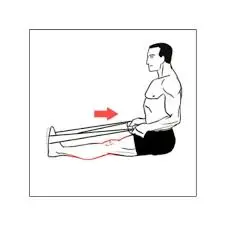
Standing Heel Raise
- Leg and ankle muscles are flexed while standing on one’s heels.
- Place both of your feet flat on the floor and stand behind a chair or counter.
- Raise your toes and hold for 5 seconds, using the counter or chair as a support.
- Then, gradually lower yourself while releasing the support. (If necessary, you may cling to the support.)
- When it becomes less painful, try doing this exercise while standing alone on the injured leg.
- Hold this position for 15–30 seconds.
- After that, return to your neutral stance.
- Then unwind.
- 5-10 times more.
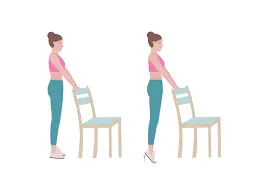
Calf Raise
- Standing begins by distributing your weight evenly between both feet.
- Take your uninjured foot off the floor and place all of your weight on your injured foot.
- Raise the heel of the affected foot as much as possible.
- Hold for a couple of seconds.
- After that, return to your neutral stance.
- Then unwind.
- Repeat this exercise with the opposite leg.
- Repeat 5-10 times throughout the day.
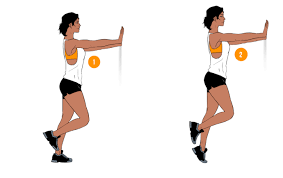
One-Leg Balance
- Start with the one-leg standing.
- Raise on your toes with chair support if support is needed.
- Hold for a couple of seconds.
- Then gradually lower.
- After that, return to your neutral stance.
- Then unwind.
- Repeat 5-10 times throughout the day.
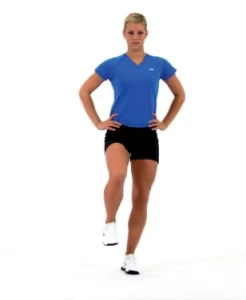
Ankle Out
- Start with a comfortable seated position.
- An exercise band should be put around your big toes.
- Using a little fitness band, pull the big toes apart while maintaining it taut.
- When fully extended, hold for a few seconds before releasing.
- Then adopt a neutral position.
- Then unwind.
- Repeat with the other foot.
- Perform this workout five to ten times per day.
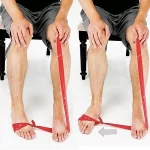
Ankle Circles
- Keeping your feet hip-width apart and your arms by your sides, take a straight stance.
- Turn your weight to your right leg and press your left toe into the ground.
- Begin by twisting your left foot and doing little ankle circles.
- Then adopt a neutral position.
- Then unwind.
- Repeat with the other foot.
- Perform this workout five to ten times per day.
- Experiment with your right foot next.

Cross-Leg Ankle Stretch
- While sitting comfortably, cross your left leg over your right knee.
- Support your right foot with your hands.
- Then, with your right hand, bend your left ankle and toes downward while pretending to point your toes.
- The front of your foot and ankle should feel stretched.
- Hold this position for a few moments.
- After that, return to your neutral stance.
- Then unwind.
- Rep with the opposite leg.
- Repeat 5-10 times throughout the day.

Lunges (static)
- Begin by putting one foot in front of the other, toes facing forward.
- Maintain a straight back.
- Bring your back knee down to almost touch the floor.
- Hold this position for a few moments.
- Then push yourself back up.
- After that, return to your neutral stance.
- Then unwind.
- Repeat 5-10 times throughout the day.
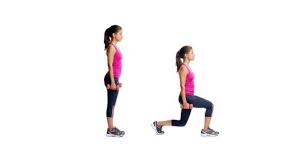
Non- Weight-Bearing Dorsiflexion
- Flex your right knee.
- Point your foot back towards your nose using only your ankle.
- Continue until you are uncomfortable or unable to tilt it back anymore.
- Maintain this position for 15 seconds.
- Return to a neutral state.
- Then unwind.
- Repeat 5-10 times throughout the day.
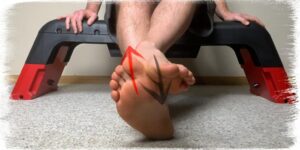
Non-Weight Bearing Plantar Flexion
- Straighten your knee.
- Only use your ankle to propel your foot forward.
- Continue until you are uncomfortable or unable to move it any farther.
- Maintain this position for 15 seconds.
- Return to a neutral state.
- Then unwind.
- Repeat 5-10 times throughout the day.
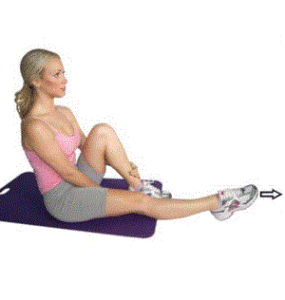
Partial Weight-Bearing Seated Calf Raises
- While keeping your toes on the ground, raise your heel as high as you can.
- Maintain this position for 15 seconds.
- Replace your heel on the floor.
- Return to a neutral state.
- Then unwind.
- Repeat 5-10 times throughout the day.
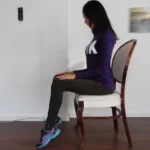
Before Beginning The Exercise:
- Warm muscles prefer to outperform cold muscles.
- Stretching should be included in your warmup regimen to prepare your muscles for the forthcoming action.
- Although it is still debatable, there is some evidence that static stretching before exercise can lower power and strength production in athletes.
Which Safety Measures Must Be Taken While Exercising?
- Before exercising, warm up and stretch gently.
- Maintain proper posture while exercising.
- Avoid strenuous exertion.
- Stop exercising if you get unexpected pain.
- Take a break between exercises.
- Keep hydrated.
When Do You Not Work Out?
- Burning sensation in the muscles.
- You are feeling ill.
- If you experience any discomfort or numbness.
- Fever and headache
- Stop exercising if it causes pain.
Which Physical Activity Or Activities Should You Avoid If You Have A Footballer’s Ankle?
- So ought to refrain from vigorous exercises until the discomfort and swelling have subsided, but it is critical to maintain moving so that the muscles and ankle do not stiffen.
- Once your ankle is less uncomfortable, begin some mild workouts.
- Long walks should be avoided.
- Run as little as possible.
- Stay away from jumping.
- Stressful Physical activity
- Avoid repetitive activity and stretches that place additional strain on joints.
Summary:
Anterior ankle impingement syndrome is sometimes known as footballer’s ankle.
When the ankle is dorsiflexed, a footballer’s ankle develops, which causes pain at the front of the ankle joint. When the ankle is dorsiflexed, the soft tissue between the talus and the tibia may be pinched, or the bone may be traumatized, resulting in a bony spur at the front of the ankle joint, which can restrict movement.
Ankle strengthening exercises may be beneficial following an ankle injury. For this, your doctor may refer you to a physical therapist. You can proceed from non-weight-bearing workouts and ankle-strengthening exercises to partial weight-bearing exercises as you recuperate bearing exercises. As your strength improves, you’ll be ready to progress to full weight-bearing and balance activities. These exercises, when performed under the supervision of your physical therapist, can assist you in returning to your prior level of activity.
FAQs
Is a footballer’s ankle in need of surgery?
Physical therapy to enhance range of motion and break down scar tissue, anti-inflammatory drugs to relieve discomfort and swelling, and finally surgery to remove the bone that is causing the obstruction can all be used to treat anterior impingement in the ankle.
What amount of time does it take to recover from a footballer’s ankle?
While someone may be able to return to sport after a relatively minor ankle sprain in one to two weeks, it can take many athletes up to six weeks to three months for ankle stability to dramatically improve.
What is the football ankle problem?
Soft tissue impingement and ankle impingement This is most common in chronically injured soft tissue in the anterolateral (front and side) region. After playing football, the player complains of limited ankle movement and swelling.
How are football ankles treated?
Rest.
Do not participate in any activity that causes discomfort, edema, or pain.
Ice.
Every two to three hours while awake, use an ice pack or take an ice bath for 15 to 20 minutes.
Compression.
Compress the ankle with an elastic bandage till the swelling goes down Elevation.
At home, how do you treat a footballer’s ankle?
Rest and rehabilitation are always the initial steps in recovering from painful ankle sprains. Doctors recommend generous compression and continual elevation to promote healing and minimize inflammation.
How do you strengthen your ankles?
Strengthening exercises such as,
towel stretch
Lunges (static)
Ankle out
Cross-leg ankle stretch
One-leg balance
Where is the footballer’s ankle hurting?
A footballer’s ankle is a painful buildup of bone spurs in front of the ankle joint that prevents movement. These diseases are common in athletes who have sustained repetitive ankle damage, such as football players. Trauma creates an increase in the joint lining, which causes pain in the front of the ankle.
What is the finest football ankle support?
Bauerfeind Sports’ Sports Ankle Support is a football ankle support. Ankle sports brace: increases depth perception, minimizes overload, and stabilizes the ankle.
How can you avoid sprained ankles?
Warm up before participating in any sport.
Prepare your muscles for the sport by.
Choose athletic shoes that are specifically designed for your foot type.
When the tread on athletic shoes wears out or the heels wear down, replace them.
Avoid stepping or jogging on uneven surfaces.
What are the advantages of having strong ankles?
Stronger ankles provide benefits other than minimizing the likelihood of strain. Lower leg muscular strength around the ankle can help prevent chronic diseases like shin splints and Achilles tendonitis. Maintaining your ankle strength can improve your stride and sports performance.
Can exercising alleviate ankle pain?
Exercises to alleviate ankle discomfort. It’s critical to regain movement and strength after an ankle injury. This promotes tissue repair and allows you to get back to moving. You may find that your progress is gradual at first.
How might a football ankle injury be treated?
Usually, ligament sprains recover with time and conservative therapies like rest in a walking boot (called a CAM boot, for controlled ankle motion) and physical therapy for four to six weeks. If the toe is injured, it may dislocate and require surgery.
What kind of ankle protection do players use?
To assist in preventing ankle sprains, many linemen wear ankle braces. It’s important to help relieve strain on their ankles while they are in their athletic stance in the queue waiting for the hike in addition to maintaining their ankle health. Ankle support is provided by a nylon lace-up brace.
How frequently should someone who has a footballer’s ankle work out?
The exercises can be done for at least 30 to 40 minutes daily.
A daily routine of light stretching and exercise will help you.
Can exercising help a footballer’s ankle?
Exercise is a common treatment for back pain that helps to stop additional harm and suffering.
Stretching is one type of exercise that strengthens the muscles that support the body.
Regular exercise can assist in reducing the frequency of recurrent discomfort.
How can ankle discomfort be relieved?
Maintain as much of your weight off your ankle as you can. Take a break from your usual routine. Ice. Three times each day, apply an ice pack or bag of frozen peas to the ankle for 15 to 20 minutes each time.
How can I make my ankles more mobile?
Among the most effective workouts to think about doing to raise current ankle strength are those that improve ankle mobility. Heel rises, toe/heel walks, toe raises/heel drops, overhead squats, lunges, and ankle flexion exercises are some of the exercises for improving ankle mobility.
What is the significance of ankle strength?
The musculature of the ankle, one of the body’s most important weight-bearing structures, influences one’s capacity for running, jumping, and balancing as well as one’s risk of suffering from a range of lower leg injuries, including shin splints, Achilles heel tendonitis, ankle sprains, and strains.
How can I make my ankles stronger every day?
Your ankle joint gets stronger as you balance on one leg. Stand on one leg while performing routine daily tasks like cleaning your teeth or doing the dishes. Gradually introduce additional balancing problems by using a BOSU balance trainer or foam pad. For 30 to 60 seconds at a time, stand just on one leg.
Can I still work out if I have ankle pain?
Exercise shouldn’t exacerbate your ankle pain in any way. However, as the body adjusts to new movements, trying out new exercises might occasionally result in temporary muscular soreness. This type of soreness should subside soon, and the next morning after your workout, it shouldn’t be any worse.
How can I increase the flexibility of my ankles?
Strengthening your ankles now is one of the most effective workouts you can do to improve your ankle mobility. Heel lifts, toe walks, heel drops, toe raises, lunges, overhead squats, and ankle flexion exercises are some of the ankle mobility exercises.
Did strong ankles aid in balance?
Ankle stability is a fundamental and frequently disregarded aspect of good health and a critical component of balance. By definition, balance is the capacity to distribute weight evenly so that you can stand and walk steadily.
References:
- Footballer’s Ankle | Treatment for Ankle Conditions & Injuries. 2021, April 10. SIMON MOYES. https://simonmoyes.com/orthopaedic-treatments/ankle-conditions/footballers-ankle/.In-Text Citation: (“Footballer’s Ankle | Treatment for Ankle Conditions & Injuries,” 2021)
- Marett, S. 2021, August 12. Dr. Sajid Shariff explains the causes, symptoms, and treatments of a footballer’s ankle Sajid Shariff. https://sajidshariff.co.uk/footballers-ankle-ankle-impingement/.In-Text Citation: (Marett, 2021)
- Footballer’s ankle | The ankle | Biomechanical problems | What We Treat | Chiropody.co.uk | Leading chiropodist & Podiatrists in Manchester and Liverpool. https://www.chiropody.co.uk/what-we-treat/biomechanical-problems/the-ankle/footballers-ankle.php.”Footballers Ankle – Ankle – Conditions – Musculoskeletal – What We Treat – Physio.co.uk,” n.d.
- Footballers Ankle – Ankle – Conditions – Musculoskeletal – What We Treat – Physio.co.uk. n.d. . https://www.physio.co.uk/what-we-treat/musculoskeletal/conditions/ankle/footballers-ankle.php.In-Text Citation: (“Footballers Ankle – Ankle – Conditions – Musculoskeletal – What We Treat – Physio.co.uk,” n.d.)
- Anterior Ankle Impingement | Symptoms, treatment, surgery, and recovery. 2023, October 17. SportsMD. https://www.sportsmd.com/sports-injuries/foot-ankle-injuries/anterior-ankle-impingement/.In-textual content citation: (“Anterior Ankle Impingement | symptoms, remedy, surgery, and recuperation,” 2023)|In-text citation: (“Anterior Ankle Impingement | signs and symptoms, treatment, surgical operation, and healing,” 2023)
- Exercise, Marcin, A. 2017, July 13. 8 Ankle Stretches to Try at Home. Healthline. https://www.healthline.com/health/fitness-exercise/ankle-stretches. In-Text Citation: (Marcin, 2017)

